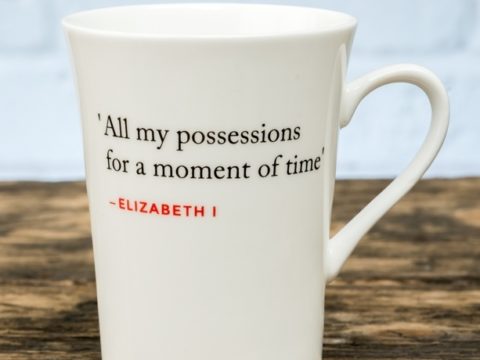Jasper Tudor: Life Story
Chapter 1: Childhood
Jasper was the second son of the secret marriage between Katherine de Valois, Princess of France and Dowager Queen of England, and one of the gentlemen of her household, Owain Tudor. He was born in around 1431, at the palace of the Bishop of Ely in Hatfield. Although the family are now referred to as Tudor, that was not how they were named at the time. Consistent with Welsh practice, which was merely to designate a child by his or her father’s name, Owain was known as Owain ap Maredudd ap Tudur (Owen, son of Meredith, son of Tudor in English) and Jasper and his older brother Edmund were referred to as Jasper and Edmund ab Owain or, sometimes, as Jasper or Edmund ap Maredudd
When Jasper was around five years old, his mother died of a lingering illness in Reading Abbey, and his father was almost immediately imprisoned for the offence of marrying the Dowager Queen without consent.Jasper, Edmund, and possibly a couple of younger siblings, were given into the wardship of William de la Pole, Earl of Suffolk.Suffolk was a rising star at the court of Jasper’s half-brother, Henry VI, King of both England, and, theoretically, France.
The Tudor children (as we will call them from now on) were placed in the care of Suffolk’s sister, Katherine, Abbess of Barking, and remained there for the next ten years. They were paid for by Henry VI, although the fees were often somewhat in arrears and the Abbess was obliged to write urging payment in 1440 of £52 12s to cover previously incurred costs. A final payment for the Tudors’ keep was made in February 1443. It amounted to £55 13 s 4d to cover expenses up until March 1442.
It’s likely that the last payment was made to 1442 because this was the time that Jasper and Edmund were received at court by their half-brother King Henry VI of the House of Lancaster. The brothers were both knighted in 1449, Edmund on the 15 th and Jasper on 25th December.
Different biographers have varying views of how much of the traditional military training the Tudor brothers received. It seems unlikely that if they were Henry VI’s court they would not have received similar training to that of other young nobleman – physical training in riding, wearing armour, fighting with sword and lance and military strategy. However there are no records of exactly what education Jasper might have had.
Four years before Jasper came to court, Henry VI had married Marguerite of Anjou. Marguerite was 15 years old and niece by marriage to Charles VII of France. Charles VII, being the brother of Katherine de Valois, was, of course, Jasper’s uncle but Marguerite was his wife’s niece and therefore far more distantly related to Jasper. Nevertheless this familial connection may have played a part in Jasper’s later loyalty to Marguerite.
Henry’s marriage was deeply unpopular. England’s hold on France had disintegrated and the blame for this was laid squarely at the door of Henry and his closest advisers, perhaps not altogether fairly. Whilst Henry was the least military of kings, it is hard to imagine that any English King, even Henry V, could have held France once the Burgundians and Armagnacs had given up their civil war and united under the determined rule of Charles VII. France was larger, more populous, and eventually, wealthier. Additionally, once the generation of men who had fought beside Henry V – his brothers, Bedford and Clarence, the Earls of Shrewsbury and Salisbury - were dead, there was no-one who commanded sufficient skill or resources to replace them.
During Henry VI’s youth and early reign, the court was largely divided into two factions - the Peace Party, initially led by Henry Beaufort, Cardinal of Winchester (Henry VI’s great uncle) and the War Party by, headed by Humphrey, Duke of Gloucester, the last surviving brother of Henry V. Gloucester was closely allied to Richard, Duke of York who, on Gloucester’s death, in somewhat suspicious circumstances in 1447, became Henry VI’s nearest male heir. York was one of the few men surrounding Henry VI with any military talent at all.
Henry VI was of a pacific turn of mind and the Peace Party triumphed, arranging the marriage with Marguerite to cement a truce, ceding the county of Maine, and accepting the bride without a dowry. This was seen by the War Party as a disgraceful alliance and Marguerite was, accordingly, resented from her first appearance in England, and her failure to conceive (it was always the woman’s fault) for seven years after her marriage was also a problem.
York was disgruntled. He felt overlooked; when his struggles to maintain English control of Normandy were not appreciated, his considerable costs were not reimbursed, and he was now likely to be relegated from his position as the King’s heir. Marguerite, used to the factional politics of the French court, was suspicious of York from the start, seeing his position as Henry’s heir as a threat.
It was agreed that the Duke of York would be appointed as Lieutenant of Ireland for a period of 10 years. On paper this was a prestigious office but it was obvious that the purpose was to remove York from the soil of England and Wales. Lords Lieutenant were not permitted to return without leave from the King. York eventually departed in June 1449, but returned in September 1450.
Sir Jasper Tudor
Family Tree







